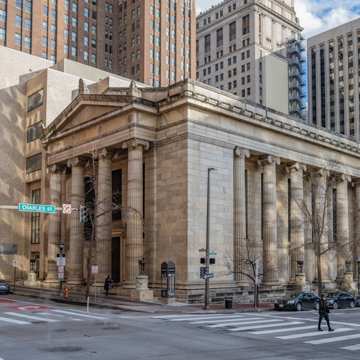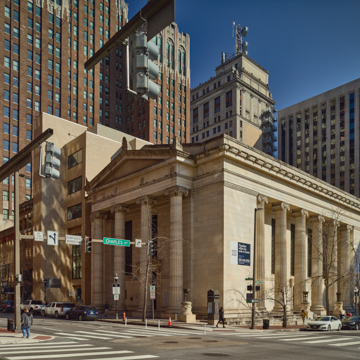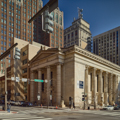This so-called Temple of Thrift built of ashlar Beaver Dam marble was modeled after Greek temples. Taking advantage of its corner location and to impress potential customers, the bank includes two facades, with a classical portico to the front and an inset colonnade on the side, both with full-height fluted Ionic columns. Contrasting with its imposing classical details, decorative cast-iron window grilles provide a notable modern touch. The Savings Bank of Baltimore was established in 1818 by a group of the city’s wealthiest citizens to provide a safe repository for the savings of the less affluent yet “worthy poor” as a means of encouraging thrift. This building was the bank’s second home, erected after the first was destroyed in the 1904 fire. The classical design was selected by the bank’s directors to express security, strength, and dignity.
You are here
SAVINGS BANK OF BALTIMORE
If SAH Archipedia has been useful to you, please consider supporting it.
SAH Archipedia tells the story of the United States through its buildings, landscapes, and cities. This freely available resource empowers the public with authoritative knowledge that deepens their understanding and appreciation of the built environment. But the Society of Architectural Historians, which created SAH Archipedia with University of Virginia Press, needs your support to maintain the high-caliber research, writing, photography, cartography, editing, design, and programming that make SAH Archipedia a trusted online resource available to all who value the history of place, heritage tourism, and learning.





